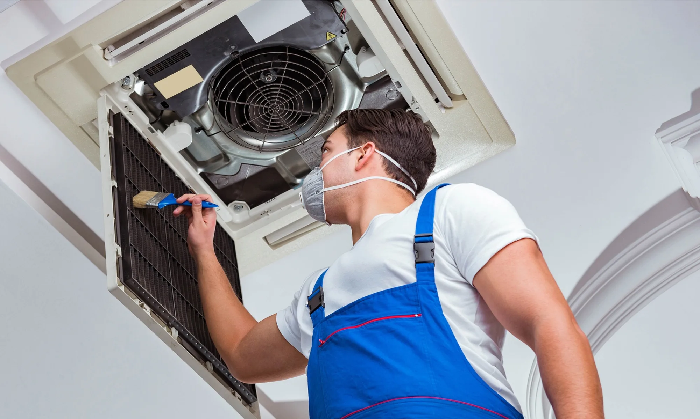Repairing air conditioning systems is an important task that requires knowledge and adherence to certain rules. Improper maintenance or self-intervention can lead to deterioration in the unit’s performance or even damage.
Before beginning repairs, it is recommended to familiarize yourself with the basic operating principles of air conditioners and safe troubleshooting methods. This will not only extend the life of the equipment but also significantly reduce the cost of calling out specialists.
Choosing the right tools and spare parts, as well as following the manufacturer’s instructions, is crucial. For additional tips and detailed information, please visit our website https://larefrigeration.com/, where you will find more information on all stages of air conditioning system repair and maintenance.
Step-by-Step Diagnostics of Air Conditioning System Problems for Home Use
Before beginning diagnostics of an air conditioning system, it is important to identify the main symptoms of the malfunction. This will help narrow down the possible causes and quickly find a solution.
Pay attention to any unusual sounds, decreased cooling or heating efficiency, odors, or increased noise levels during operation. These symptoms may indicate specific problems with the system.
Step-by-Step Diagnostics
- Checking the Power Supply and Electrical Power: Make sure the air conditioner is plugged in and has a stable power supply. Check the circuit breakers and fuses in the panel to ensure they are not tripped. If possible, measure the voltage with a multimeter to rule out power outages.
- Inspecting the Outdoor Unit and Filters: Open the casing of the outdoor and indoor units (unplug the unit if necessary). Inspect the filters for contamination – dirty filters reduce efficiency and cause the system to overheat. Clean or replace filters if necessary.
- Checking the Refrigerant Level: Insufficient refrigerant can cause poor cooling performance. The most accurate method is to have a specialist measure the system pressure, but signs of low pressure can be identified by a lack of condensation or poor cooling.
- Inspect the compressor and piping. Check for visible damage, cracks, or leaks in the piping and compressor. A noticeable drop in pressure or refrigerant leaks require professional intervention for recharging and repair.
- Diagnose sensors and electrical components. Check the operation of temperature sensors and relays. Use a multimeter to ensure the wiring and contacts are intact. If you suspect a malfunction, contact a specialist, as many electrical components require professional inspection.
Choosing professional tools for air conditioner repair: what and how to use
When repairing air conditioning systems, it is important to use the right tools to ensure quality and safety. High-quality equipment helps accurately diagnose problems and perform installation or repairs efficiently.
Professional tools reduce the risk of damage to parts and increase the longevity of the work performed. Selecting the right tools also speeds up the repair process and ensures it meets standards.
Basic Tools and Their Purposes
- Manometer Kits – for checking system pressure and diagnosing refrigerant status.
- Untackers and Wrenches – for removing and tightening clamps, connections, and filter rings.
- Thermal Imagers – help identify cold or hot spots on the surface of system components to diagnose leaks or malfunctions.
- Freon Charging Tools – include pressure gauges, funnels, and hoses to ensure safe and accurate charging of the system.
- Grinding and Threading Tools – for preparing pipelines and connections before installation or repair.
How to Use Tools Correctly
- Before starting work, carefully read the instructions for each tool and ensure it is in good working order.
- Use the Tools Use only as directed, avoiding excessive loads and improper operation.
- Keep tools clean: dirt and dust can damage systems and reduce the quality of repairs.
- For increased safety, use personal protective equipment such as gloves and goggles.
- After completing work, check the functionality of the tools and carefully store them in designated storage areas.
Replacing Filters: Key Points and Procedure
Before starting work, determine the filter type and model, and prepare the necessary tools and spare parts.









Leave a Reply